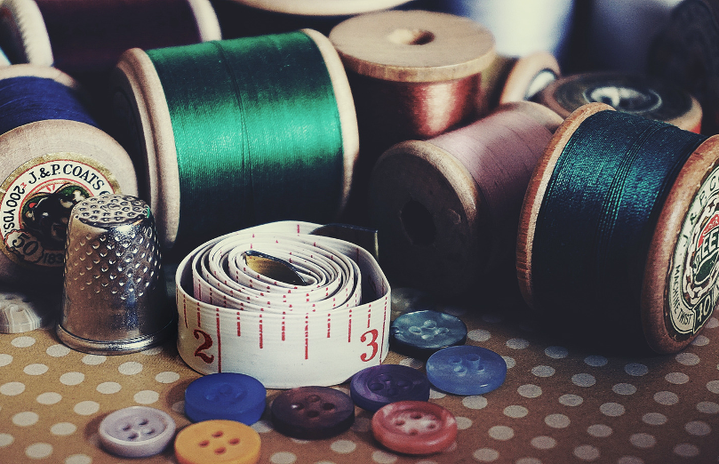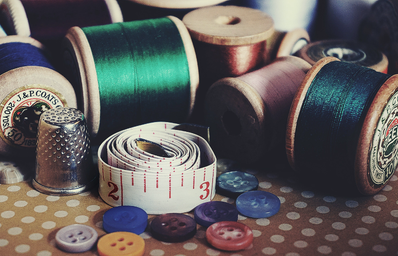For myself as for many others, one of the few good things to come out of the coronavirus pandemic is that it has provided me with a lot more free time. Gone are the days of waking up at ungodly hours to catch the bus, commuting for hours a day, and wasting time lollygagging in between classes at school. With all of these awkward intermissions between activities out of my life, I’ve been able to devote more of my time to hobbies and fun, and what I’ve been exploring recently are slow crafts. The concept is pretty self-explanatory–they’re crafts that take a substantial amount of time to create, and they often have an association with the past. Think needlework, embroidery, etc.
There are two things I like about slow crafting: first, albeit time-consuming, slow crafts are very easy to make and do not necessarily require any innate talent or artistry–anyone can pick up the skills to make them! Second, making a slow craft usually involves repeating one technique over and over, which renders the practice oddly similar to meditation, where you focus on one thing to let go of your thoughts and clear away stress. Today, I’ll be sharing some of my favorite slow crafts I’ve been trying my hand at, and I hope you’ll be inspired to try some of them out as well!
- Needle-Felting
-
Needle-felting is by far one of the simplest crafts I’ve ever come across. Essentially, all it involves is poking at loose wool with a special needle tool in order to mat it together and have it form a certain shape. Think of it like claywork but with fabric. It’s unclear when or where needle-felting originated, but it’s definitely been around for a very long time, and there are some pretty fun legends floating around the interwebs about it. A fun one is that Saint Clement and Saint Christopher apparently packed their sandals with wool to prevent blisters while fleeing persecution, and thus discovered that their movement and sweat had transformed the wool into felt socks.
In my experience, this is a very time-consuming craft, and even very small objects can take hours to make, so I advise putting on a podcast or TV show in the background so that it doesn’t become overly monotonous. The most common needle-felt creations are cute little cartoon animals, but some artists take the craft to a whole new level and make photorealistic animals, flowers, and more. So, it’s a good craft for beginners and experts alike. You can also attach your needle-felt creations to keychains, jewellery backings, and more to give them a practical purpose. If you’re interested in needle-felting but aren’t sure where to start, you can easily find pre-assembled kits for specific creations wherever craft supplies are sold. Other intriguing forms of felting are wet felting and nuno felting, but those are a bit more complicated.
- Cross-Stitching
-
You’ve probably already come across cross-stitching in the form of handmade cross-stitch brooches at the thrift store. What can I say, it’s the OG grandma craft. I started my cross-stitch journey when I found a massive cross-stitching kit from 1979 at the thrift store still in its packaging and thought I’d give it a try (it’s been about 3 months of work and I’m still chipping away at it). Like needle-felting, cross-stitching involves one basic technique. As the name implies, it’s all about creating X-shaped stitches by crossing thread over and under mesh or fabric, and eventually these form a design or picture. As with needle-felting, cross-stitching is a very old art found in various cultures around the world, and one of the earliest samplers ever discovered dates back to the 6th century (a sampler is a piece of needlework with letters and verses embroidered on it as an example of one’s skill). If this craft intrigues you, you can easily find cross-stitch kits at any craft store or online. My personal favorites are the profane kind.
- Latch-Hooking
-
Compared to cross-stitching and needle-felting, latch-hooking is probably the least time-consuming craft. I discovered it the same way I did cross-stitching: by finding a vintage latch-hooking kit at the thrift store (which I am also still working on, because one can never have too many ongoing crafting projects). It’s probably also the only craft on this list that’s suitable for kids since no needles or sharp objects are involved. Latch-hooking entails using a hinged hook to knot pre-cut pieces of yarn to a mesh canvas until these form a picture. The end result is a shaggy rug with art on it, and it can either be used as a proper rug or hung up on a wall to be admired. In contrast to cross-stitching and needle-felting, this is a much more recent craft, originally invented in 1847 as the latch needle used in knitting machines. Pretty cool, no?
There you have it, friends: three slow-going, old-fashioned crafts to explore in your downtime. Grab a hot drink, sit by ye olde fireplace, and get to crafting!


